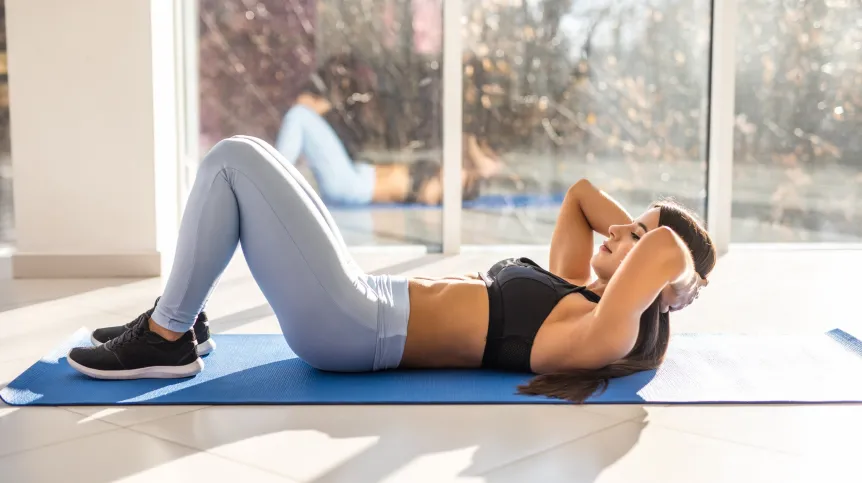
Strengthening the transverse abdominal muscle eliminates pain in the lumbar spine, show biomedical engineers from the Silesian University of Technology. Have also calculated the lumbar loads when lifting objects, the weight of which, with incorrect body position, is several times greater than the body weight of the lifter.
The research was carried out by Dr. Katarzyna Nowakowska-Lipiec and Professor Robert Michnik from the Faculty of Biomedical Engineering of the Silesian University of Technology.
The study group consisted of approximately 30 mothers of children with motor disabilities (teenagers, most of them unable to move independently, weighing several dozen kilograms). These women take care of their children every day, performing various types of care activities that involve lifting and carrying them - in a non-ergonomic body position, with excessive spine tilt. All of them complained of lumbar back pain.
The researchers wanted to check how the abdominal and back muscles work when performing specific activities, including sitting and standing up and lifting objects weighing 10 and 20 kg from various heights and in various body positions.
'We studied the kinematics of movement, i.e. how individual parts of the body are arranged when performing various movements. We used an optical system - we placed reflective markers on each person's body and used cameras to record data. We entered the obtained data into special software that allowed us to identify loads in the musculoskeletal system and calculate the forces in the muscles and joints of the spine', says Professor Michnik.
It turned out that even such simple activities like sitting down and getting up from a chair generated high loads on the lumbar spine. Lifting heavy objects was no different.
'For example, when lifting and holding a 10-kilogram object in a standing position, the load on the spine is more than double the person's body weight. When lifting 20 kg with a bent torso, the load is more than three times the weight of the lifter. In everyday life, we are not aware of it and we do not feel it, but when we are excessively active, we start to feel pain', says Dr. Nowakowska-Lipiec, the first author of publications in the Journal of Biomechanics.
Then, based on these analyses and various numerical simulation configurations, the researchers identified the muscles that could be strengthened to relieve the lumbar muscles.
'We have identified the transverse abdominal muscle as the one whose strengthening leads to minimising the load on the lumbar spine and, consequently, to minimising pain', adds Dr. Nowakowska-Lipiec.
Research also shows the opposite - the weaker the transverse abdominal muscle, the greater the load on the lumbar spine when lifting.
The study has shown that strengthening the back muscles does not help, it even increases the load on the lumbar spine. The research was part of a larger project titled '3 Year Healthy Community Project' of Special Olympics Poland, led by Dr. Andrzej Myśliwiec, a professor at the J. Kukuczka Academy of Physical Education in Katowice. As part of the project, biomedical engineers from the Silesian University of Technology together with physiotherapists from the Academy of Physical Education in Katowice investigated the issue of physical health of caregivers and parents of disabled children. According to Michnik, it was a support program for mothers of children with physical disabilities, including diagnosis of the problem and a physiotherapy exercise programme. 'Our task was to verify the concept of exercises prepared by physiotherapists', he adds.
The physiotherapy programme lasted half a year. According to the researchers, after this time most of the programme participants declared a reduction in pain.
'For some time now, some physiotherapists have been inclined to believe that strengthening the transverse abdominal muscle can minimize lumbar pain, but so far there has been no confirmation of this in scientific articles. Our paper, based on biomechanical research and mathematical modelling of the musculoskeletal system, is the first to prove that strengthening the transverse abdominal muscles minimizes the load on the lumbar spine’, says Professor Michnik.
'Although the research results refer to a specific research group, they can be considered universal', adds Dr. Nowakowska-Lipiec.
To activate the transverse abdominal muscle, you can, for example, consciously pull your belly in (pull your navel towards your spine). This muscle weakens as a result of a sedentary lifestyle and being overweight, among other things.
PAP - Science in Poland, Agnieszka Kliks-Pudlik
akp/ agt/ kap/
tr. RL













